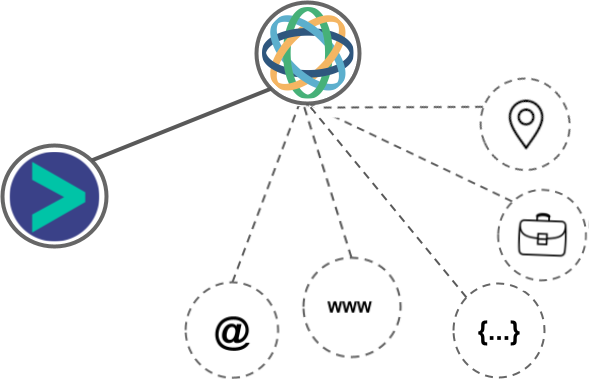Close vs Pardot
Hyperise integrates with 100's of sales and marketing tools, many of which are in the CRM category. With so many to choose from it's sometimes hard to know which is best, but don't worry, we've got your covered.
In this comparison guide we're going to look at the Highlights, Pros, Cons and Pricing of Close and Pardot. We'll also delve into the details of which offers the best personalization options within CRM, with there respective Hyperise integrations

Close
Pricing: Close CRM offers three pricing plans. The Basic plan costs $25/user/month, the Professional plan costs $65/user/month, and the Business plan costs $145/user/month. Close CRM offers a free 14-day trial for all plans. Additionally, Close CRM offers a custom Enterprise plan for larger companies with specific needs. The Enterprise plan's pricing is determined based on individual requirements and features.Vs
Pardot
Pricing: Pardot is a CRM platform that offers various pricing options based on the specific needs and requirements of the organization. The pricing of Pardot ranges from $1,250 per month for up to 10,000 contacts to $4,000 per month for up to 100,000 contacts. Customers can also request a custom quote for larger contact databases. These prices are exclusive of additional features such as B2B marketing analytics and salesforce engagement.
Close vs Pardot Highlights
Close and Pardot are both customer relationship management (CRM) platforms that offer sales automation, lead tracking, and reporting features to businesses. However, there are some key differences between these two CRM platforms.
One major difference between the two is that Close is primarily designed for small to mid-sized businesses, whereas Pardot is geared towards larger enterprises. Close offers a simple, user-friendly interface and focuses on streamlining the sales process by prioritizing leads and helping users stay on top of their workflows. On the other hand, Pardot is a more robust platform that offers advanced marketing automation capabilities such as email marketing, lead nurturing, and lead scoring.
Another key difference between the two platforms is their pricing structure. Close offers a flat pricing model, which means that users pay a fixed amount per user per month. Pardot, on the other hand, uses a more complex, tiered pricing model based on the number of contacts and features required.
Overall, Close is a good option for small to mid-sized businesses looking for an easy-to-use CRM that focuses on sales automation and lead management, while Pardot is a better fit for larger enterprises needing more advanced marketing automation features.
Close vs Pardot Pros
Close Pros
- Close is a more affordable option compared to Pardot, making it a great choice for smaller businesses and startups.
- Close offers a more streamlined and user-friendly interface, making it easier for users to navigate and use the platform.
- Close provides a customizable sales pipeline, allowing businesses to tailor their sales process to their specific needs.
- Close includes robust call and email tracking features, giving users a comprehensive understanding of their sales communication.
- Close offers integrated VOIP calling, allowing users to make calls directly from the platform without needing a separate phone system.
- Close provides a mobile app, allowing users to access the platform and manage their sales tasks from anywhere.
- Close includes lead scoring and prioritization tools, helping businesses focus their efforts on the most promising leads.
- Close offers sophisticated reporting and analytics, allowing users to track their sales performance and identify areas for improvement.
Pardot Pros
- Pardot has a robust marketing automation toolset that allows for targeted campaigns and lead nurturing.
- Pardot offers more advanced reporting and analytics features compared to Close.
- Pardot integrates with Salesforce, which can enhance the overall Salesforce CRM experience.
- Pardot has a more user-friendly interface and is easier to set up and customize.
- Pardot offers more advanced lead scoring and grading capabilities compared to Close.
- Pardot has a wider variety of pre-built integrations with other marketing and sales tools.
Close vs Pardot Cons
Close Cons
- Close has limited email automation and marketing capabilities compared to Pardot.
- Close doesn't offer lead scoring capabilities, which can be helpful in determining which leads are most promising and should be pursued.
- Pardot offers more advanced reporting and analytics features, which can be helpful in measuring the success of your marketing and sales efforts.
- Close's pricing structure can be confusing and may not be as transparent as Pardot's.
- Close doesn't integrate with as many third-party apps and tools as Pardot, which can limit its functionality with other systems in your tech stack.
Pardot Cons
- Here are the cons of Pardot in comparison with Close:
- Steep learning curve: Pardot can be difficult to learn, with a complex interface and many features that require training.
- Limited integrations: compared to Close, Pardot lacks some key integrations that can be important for some businesses, such as social media and messaging apps.
- Expensive: Pardot can be quite costly, especially for small businesses, and the pricing structure is not always transparent.
- Limited lead capture options: Pardot's lead capture options are not as diverse as those of Close, which can impact the ability to generate leads.
- Poor reporting: Pardot's reporting tools and analytics are not as robust or intuitive as those of Close, making it difficult to keep track of performance metrics.
- Limited customization: compared to Close, Pardot offers limited customization options, which can make it difficult to tailor the platform to specific business needs.
Close & Pardot Hyperise Integrations
Close uses the HTML code embed method to integrate with Hyperise, giving a simple way to add personalized images to your messages.
Close makes the following data points available to Hyperise, to enable personalization in images used in outreach and linked out to your personalized website landing pages.

- Using business Email passed from Close, Hyperise is able to enrich business logo and website screenshots. In some cases, with a business Email we're also able to enrich profile images, subject to the business email having a publicly available profile.
- Using business Website passed from Close, Hyperise is able to enrich business logo and website screenshots.
- Business name
- City
- Zip
Close Integration Guide
Pardot uses the HTML code embed method to integrate with Hyperise, giving a simple way to add personalized images to your messages.
Pardot makes the following data points available to Hyperise, to enable personalization in images used in outreach and linked out to your personalized website landing pages.
- Using business Email passed from Pardot, Hyperise is able to enrich business logo and website screenshots. In some cases, with a business Email we're also able to enrich profile images, subject to the business email having a publicly available profile.
- Using business Website passed from Pardot, Hyperise is able to enrich business logo and website screenshots.
- Business name
- City
- State
- Country
- Zip
- Category
Pardot Integration Guide
 vs
vs  vs
vs  vs
vs 

 vs
vs  vs
vs  vs
vs  vs
vs  vs
vs  vs
vs  vs
vs  vs
vs 










